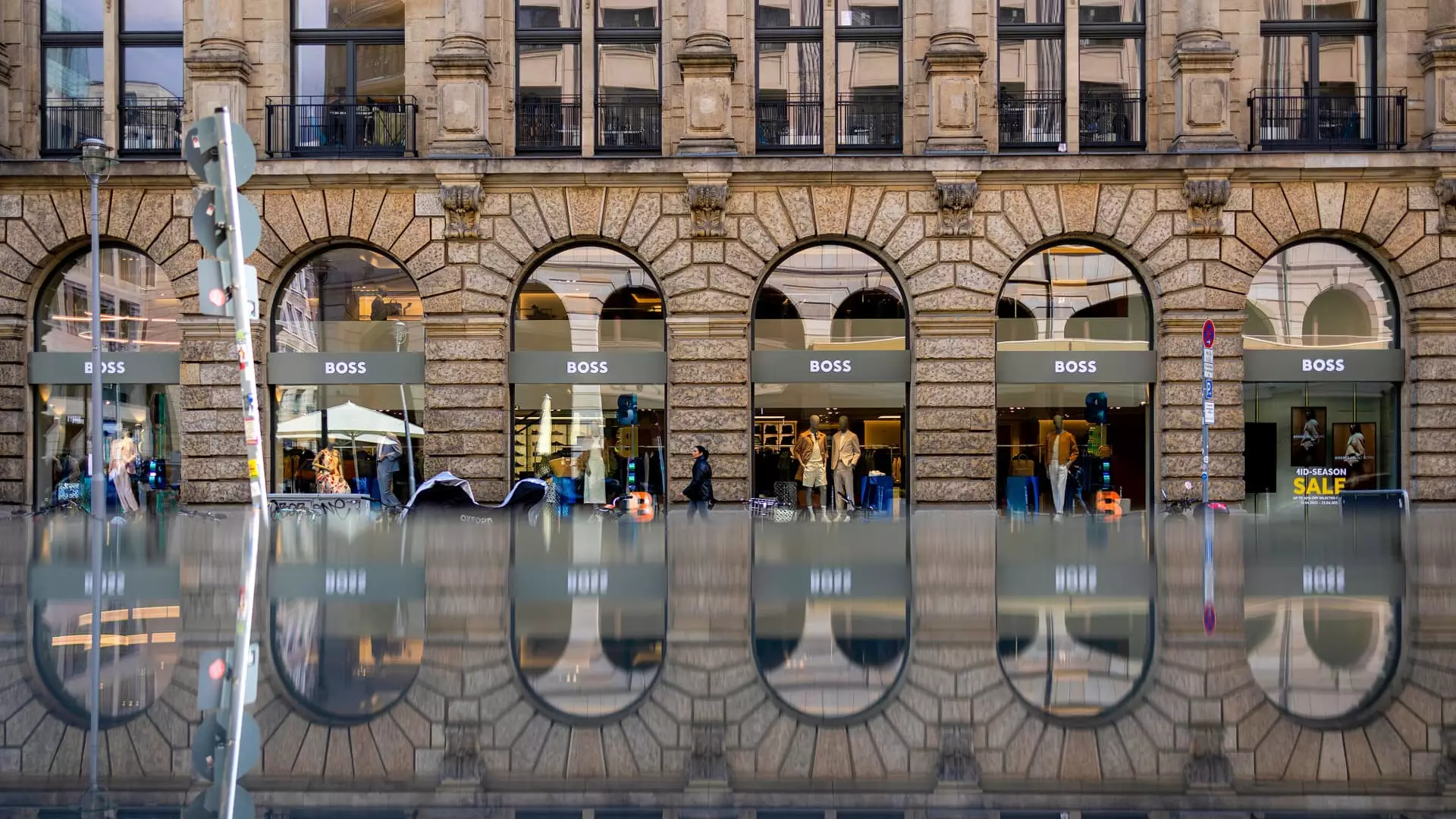Hugo Boss, the distinguished German fashion label, recently showcased an impressive display of stability amidst a convoluted economic landscape, which saw its shares surge 8.8% following a relatively modest decline in sales. With first-quarter revenue coming in slightly better than analysts’ gloomy forecasts, one cannot help but wonder whether this resilience is an indication of the brand’s robust strategy or merely a temporary reprieve in a fragile market. The reported sales decrease of only 2% on a currency-adjusted basis — down to 999 million euros — leads one to examine the dynamics that underlie such seemingly positive news for a label long associated with luxury and lifestyle.
The Chinese Dilemma
Despite boasting a strong presence in the global market, Hugo Boss finds itself grappling with the turbulent economic situation in the Asia-Pacific region, particularly China. The “ongoing subdued consumer demand” there poses a significant challenge, reflective of a larger trend affecting many Western brands seeking to penetrate the Chinese consumer psyche. As stated by CEO Daniel Grieder, the uncertain outlook among Chinese consumers resonates with a collective hesitance that casts a long shadow over international sales. The brand’s reliance on the Chinese market, intertwined with the psychological grip of global macroeconomic instability, is a signal that Hugo Boss must recalibrate its strategies to ensure sustained growth.
American Market Dynamics
Conversely, the United States market serves as a double-edged sword for Hugo Boss, contributing approximately 15% to group revenues. However, as Grieder pointedly states, consumer confidence seems to be weakening amid ongoing tariff threats and geopolitical maneuverings. The paradox lies in the fact that while the U.S. represents a lucrative segment, it is also fraught with uncertainties that could derail even well-laid plans. The resignation expressed by Grieder regarding the fluid tariff situation elucidates the precarious existence of firms caught in the web of global trade policies. The brand is pivoting strategically, exploring alternative sourcing markets to mitigate the potential fallout from rising political tensions with tariffs at their core.
Strategic Overhaul
Hugo Boss is far from being an institution that rests on its laurels; the company has actively engaged in a comprehensive strategic overhaul, responding to the shifting tides of consumer preference and market demand. Analysts have noted improvements in store formats and product diversification to captivate younger, fashion-savvy demographics. This forward-thinking approach is necessary for the brand to revive its glory days while remaining relevant in a hyper-competitive environment. However, there’s a significant void in women’s wear that warrants urgent attention. Many observers have criticized the lack of standout offerings in this critical category, suggesting that acquiring an established women’s fashion brand could give Hugo Boss a much-needed boost in this area.
The Broader Implications
Moreover, the impact of broader economic factors cannot be understated. Analysts from Citi have warned that any major external shifts—be they political, economic, or social—can pose considerable risks to Hugo Boss’s sales trajectory. They argue that maintaining consumer confidence is paramount, as even the slightest shift in sentiment can lead to consequences that resonate throughout the corporate hierarchy. This projection instills a sense of urgency for the company to remain vigilant, adapting to a world where uncertainty reigns.
In an environment rife with speculation surrounding global economic recovery, Hugo Boss appears to be navigating a precarious balancing act. While the company currently enjoys a degree of stability, the long-term viability of this turnaround remains inextricably linked to external factors—especially consumer sentiment in both China and the United States. As we watch the unfolding narrative of Hugo Boss, it becomes increasingly clear that adaptability may prove to be the key to continued success in a landscape marked by volatility and challenge. Despite the signals of broader decline, this iconic brand still holds potential, provided that its strategists can effectively maneuver through the layers of complexity in the global marketplace.

